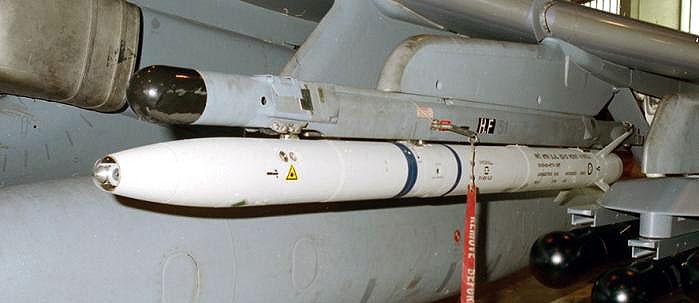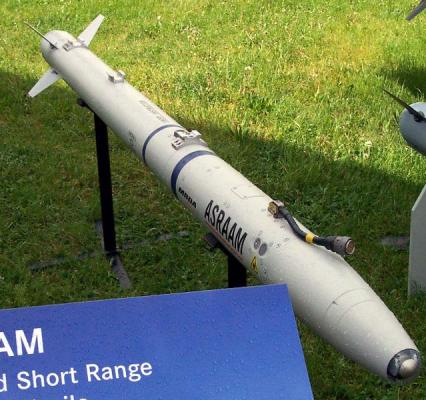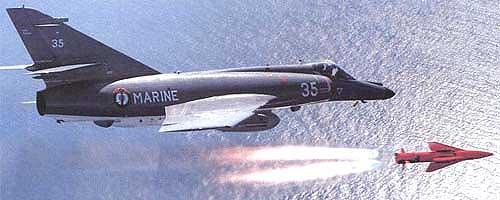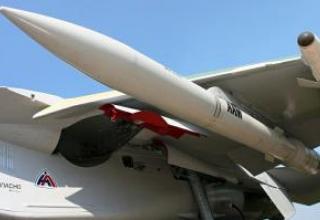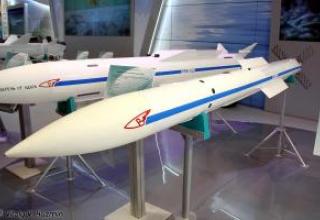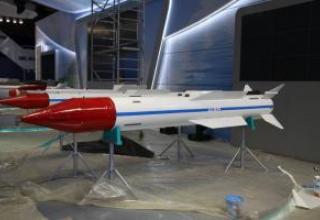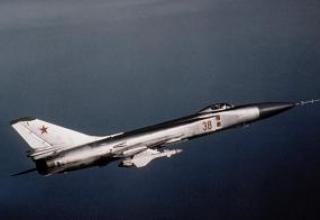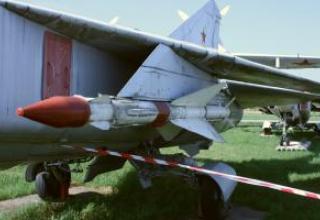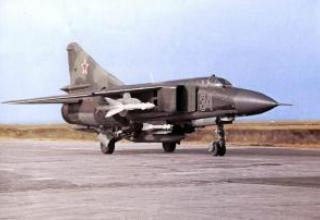The ASRAAM ("Advanced Short Range Air to Air Missile") missile development program was launched in 1982 as part of an international consortium of UK, Germany, Canada and Norway. The launch of this program was a response to the successful testing and adoption in 1983 of the Soviet R-73 missile. Initially, ASRAAM was developed as a single NATO missile, but later, due to significant differences in tactical and technical requirements of the participating countries to the developed model, the work under a single program was curtailed. In 1989, the program left Germany, and in 1990 the program was discontinued. - In 1990 Norway and Canada.
In May 1991, a tender was announced for the development of a close air combat missile for the British Air Force. VAe Dynamics with ASRAAM, BGT (Germany) with modified AIM-9L and Matra (France) with MICA. Following the results of the tender in March 1992 the firm "BAe Dynamics" has received the contract in cost of 912 million US dollars on development of new rocket, under designation SR(A)-1234.
Flight tests of the new missile began in 1994, the first samples were received by the British Air Force in February 1998. As a result of operation the missile was subjected to a number of serious improvements. ASRAAM reached operational readiness only in September 2002 and under the designation AIM-132 was officially adopted by the British Royal Air Force.
For the development and production of the ASRAAM boost-phase missile in 1996, it was officially adopted by the British Royal Air Force under the designation AIM-132. "BAe Dynamics, together with the French company Matra, established a joint venture, which in 2001, together with several other companies became part of the MBDA Missile Systems Corporation.
At present, ASRAAM is in service with "Tornado", "Harrier" and "Typhoon" aircraft of the British Air Force, as well as F/A-18 aircraft of the Australian Air Force.
In September 2007, the UK Department of Defence announced funding to explore the possibility of using ASRAAM as an anti-aircraft missile to eventually replace the Rapier and Sea Wolf SAM systems.
Composition:
The rocket follows a windless aerodynamic scheme and has a dual-mode solid fuel engine (developed by Royal Ordnance), REMUS, equipped with a charge of low-smoke mixed fuel. The engine casing is a double-layer, with an outer shell made of steel tape. This design provides a significant increase in rigidity, strength and safety of the engine while reducing the weight of the casing. As a result, with the same outer diameter, REMUS contains almost 70% more fuel per unit length than the Sidewinder Mk.36 engine. Four independent aerodynamic rudders located in the tail end of the hull are driven by high-torque servo drives. Perfect aerodynamic shape, large traction and powerful rudder drives provide the AIM-132 high speed, controllability and maneuverability, which allows it to attack targets with large bearing (in the front and rear hemispheres) at significant ranges with its own overloads up to 50g.
The combat unit is shrapnel-flagged, the BC weight is 10kg. The BC is equipped with contact and non-contact laser fuses.
The ASRAAM missile guidance system is a combined, inertial system and thermal imaging GSN (TGSN) developed by Hughes (now Raytheon), similar to the American AIM-9X. Vsekursnaya TGSN (operating range 0.5-5.4 μm) is equipped with a matrix of infrared detectors measuring 128 x 128 elements, located in the focal plane of the optical system and a digital processor. TGSN coordinator is placed in a two-axis cardan suspension, which provides angles of pumping up to ± 90 °. The signal processing system ensures a high degree of protection against organized and natural disturbances, including the background of the underlying surface. The TGSN adjusts itself to the interference and, as it approaches, builds its image and selects elements, which allows the missile to target the most vulnerable nodes. When pointing the missile at its target, modified proportional navigation methods are used. The system software is made in the high-level ADA language (US DoD standard), which allows relatively easy reprogramming of tracking and interception algorithms. The range of F-15 type target acquisition (in non-inforced mode) in free space in the front hemisphere is estimated at 14...18 km.
Matrix of IR detectors can be cooled to operating temperature (80K) by means of autonomous cryogenic installation placed directly on the rocket itself or by means of refrigerant source on the aircraft carrier. The gyroinertial unit of the high precision inertial control system includes a three-axis fiber optic gyroscope and solid-state accelerometers. The source of electricity is a thermopile located on board the rocket.
The AIM-132 guidance system provides:
- launch out of visual sight (BVR mode - "Beyond Visual Range") with target capture on the trajectory following the target designation from the inertial system, it is possible to capture the target again if it is lost. In this mode, the missile's area of combat application is extended to medium ranges in accordance with the concept of extending the functionality of a new generation of weapons, it is provided to strike the target before the beginning of close air combat;
- launch in target-grabbing mode of TGSN in suspension under the launcher;
- launch at angles of target sighting greater than 90° (shoulder-fire) with the TGSN target pickup on the target designation trajectory from the inertial system or the Helmet Mounted Sighting System (HMSS) on the sighting angles outside the focal point deviation angles. This mode of operation is provided by the high maneuverability of the missile and makes it possible to use the AIM-132 as a means of self-defense aircraft carrier.
Pairing with the carrier aircraft is performed according to MIL-STD-1553 standard. For the launch of the AIM-132 ASRAAM missile can be used all AIM-9X and AIM-120 launchers (including analogue interface).
Characteristics:
| Range of fire, km | 0.3-18 |
| Start weight , kg | 88 |
| Dimensions, mm: | |
| - length | 2900 |
| - case diameter | 166 |
| - wingspan | 450 |
| Flight Speed | 3.5М |
Testing:
During Operation Desert Storm in 1991, French Jaguar aircraft used AS-30L, which was normally launched from the aircraft during a 1.3 km dive (2.2 km entry altitude). A container with Atlis-2 target designation system was used for laser illumination of targets, suspended on a sub-basement pylon. A video was shown to the press depicting the AS-30L missile hitting a fortified ammunition depot, flying into its premises through the right gate door. In total, about 60 missiles were fired during this operation, the number of hits was 97% (according to other data 80%). According to French pilots in the Middle East theatre of war, they began to record ground targets at a distance of 16-20 km using the television system of the upgraded Atlis-2 container.
During NATO's air aggression against Yugoslavia in 1999, French Super Etendart fighter jets struck targets in Serbia (mainly in the western and southwestern parts of the country), attacking army and paramilitary police units while providing advanced aircraft pointers (AFAC), whose functions were taken over by American tactical F-16C fighters. The combat missions were conducted by pairs of aircraft - one aimed at the target using the Atlis-2 laser system, while the other struck by AS-30L missiles or laser-guided 500-pound GBU-12 bombs.
Sources:
- Системы управления вооружением истребителей: Основы интеллекта многофункционального самолета /РАРАН; Л.Е.Баханов и др.; под ред. Е.А.Федосова М.:Машиностроение, 2005.400с. (Справ.б-ка разработчика исследователя).
- Matra-BAe AIM-132 ASRAAM ASRAAM - The RAAF's New WVR AAM
- MBDA (BAe Dynamics/Matra) AIM-132 ASRAAM
